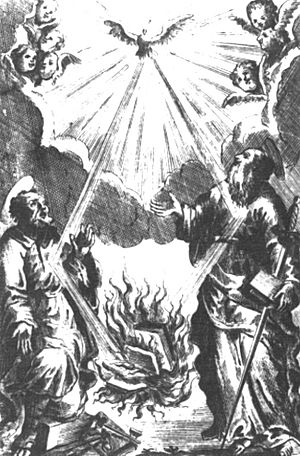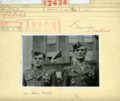Censorship facts for kids
Censorship happens when an authority, like a government or a religion, stops or removes certain communication. This can be words, pictures, or even art. It means that some information is not allowed to be shared with everyone.
This has happened all over the world, in many different countries and societies. Every group has rules about what can be said or shown. Sometimes, facts are changed or completely removed on purpose. This might be because the information is seen as wrong, harmful, or simply inconvenient for those in power.
A censor is a person whose job is to check different types of media. They decide what material should be removed or changed. There are many reasons why something might be censored. For example, it could be to protect military secrets or to stop things considered immoral or against a certain religion. Censorship is often seen as a bad thing, and people often argue about when it is okay to censor something.
In places with freedom of speech and freedom of the press, most information can be published. However, even in developed countries with a lot of freedom, some things still cannot be shared. For instance, journalists usually cannot publish secret military plans. If they do, the government might arrest them.
Contents
Why Information Is Controlled
Information is often censored for one or more of these reasons:
Protecting Young Audiences
This is called moral censorship. It means that some facts or images are thought to be not suitable for certain audiences, especially children. The goal is to protect people from content that might be upsetting or inappropriate.
Keeping Military Secrets Safe
During a war, news reports might be censored. This is known as military censorship. It's done to make sure the enemy cannot get important information. This could include the size of troops or the plans and tactics used in battle.
Controlling Information for Power
Political censorship happens when a government or political party hides certain information. They do this to prevent rebellions or to avoid looking bad. It helps them keep control over the public.
Religious censorship occurs when a main religion removes or changes information. For example, the Vatican censored Galileo Galilei's ideas. Another example is when the Iranian Ayatollah Khomeini banned The Satanic Verses by Salman Rushdie.
Businesses Controlling Their Image
Corporate censorship is when large businesses stop material from being published. This happens if the material makes their business ideas or employees look bad. They want to protect their reputation.
Debates About Censorship
There is often a lot of discussion about when censorship should be allowed. For example, U.S. President Richard Nixon tried to censor the New York Times. The newspaper wanted to publish articles about the Pentagon Papers. These were secret military documents that showed Nixon and the military had lied about the Vietnam War.
The Supreme Court later stopped Nixon's censorship. They said he had not proven it would be dangerous to the military. It would only be embarrassing for him. In some countries, journalists are arrested for saying negative things about the government.
Censorship by Other Groups
Governments are not the only ones who censor information. For example, the history department at Middlebury College once told professors not to accept Wikipedia as a source for papers. Some people called this censorship. This was because the department was telling professors what sources they could or could not accept.
Sometimes, a group or a website will not allow certain facts, articles, or pictures. They might believe these things should not be seen. There is a big debate about the difference between censorship and editing. Editing is simply deciding what should or should not be published in a normal way.
Related pages
- Movie censorship
- Censorship by Google
- Reporters Without Borders
- Wikileaks
Images for kids
-
The daily newspaper of Wrocław, Polish People's Republic, March 20–21, 1981. It shows censor intervention on the first and last pages. Under the headlines "Co zdarzyło się w Bydgoszczy?" (What happened in Bydgoszcz?) and "Pogotowie strajkowe w całym kraju" (Country-wide strike alert), the censor removed a section. The workers in the printing house then blanked out an official propaganda section. The right-hand page also has a hand-written confirmation of that decision by the local Solidarity trade union.
-
Historic Russian censorship. This is from the book Notes of my life by N.I. Grech, published in St. Petersburg 1886. The censored text was replaced by dots.
-
Author Ozzie Zehner self-censored the American edition of his environmental book, Green Illusions. He was worried about food libel laws.
See also
 In Spanish: Censura para niños
In Spanish: Censura para niños










